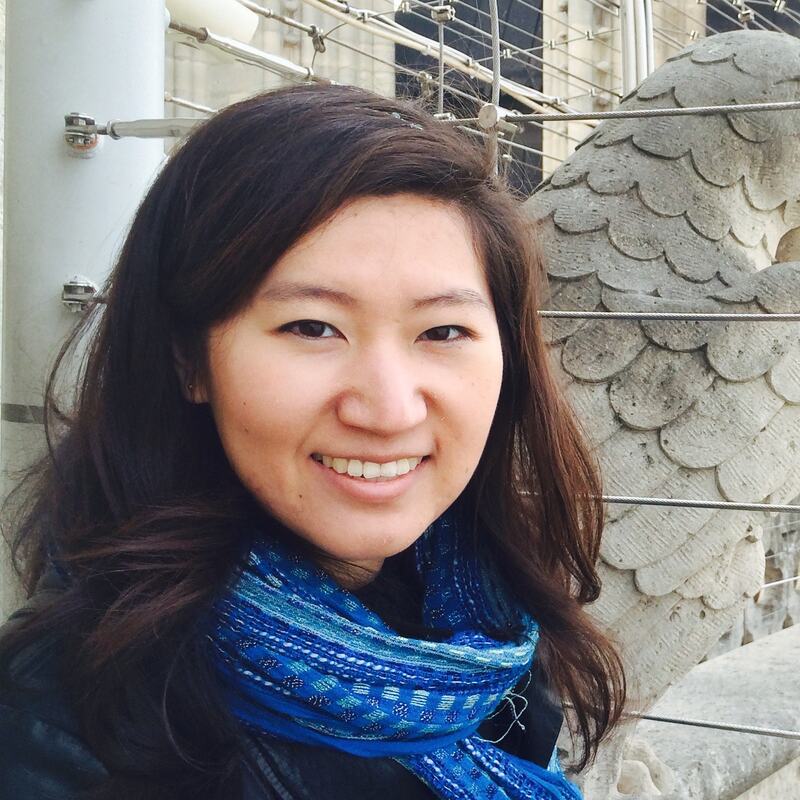Gender & Intersectionality in Asian American History
Survival & Resistance: Creativity of Asian American Men
GRADE LEVEL: 6 - 12
SUGGESTED RUN TIME: 50 minutes (1 class period)
SUGGESTED RUN TIME: 50 minutes (1 class period)
Common Core Standards
Grades 6-8:
CCSS.ELA-LITERACY.RH.6-8.1: Cite specific textual evidence to support analysis of primary and secondary sources.
CCSS.ELA-LITERACY.RH.6-8.2: Determine the central ideas or information of a primary or secondary source; provide an accurate summary of the source distinct from prior knowledge or opinions.
CCSS.ELA-LITERACY.RH.6-8.7: Integrate visual information (e.g., in charts, graphs, photographs, videos, or maps) with other information in print and digital texts.
For more information, please visit www.thecorestandards.org.
CCSS.ELA-LITERACY.RH.6-8.1: Cite specific textual evidence to support analysis of primary and secondary sources.
CCSS.ELA-LITERACY.RH.6-8.2: Determine the central ideas or information of a primary or secondary source; provide an accurate summary of the source distinct from prior knowledge or opinions.
CCSS.ELA-LITERACY.RH.6-8.7: Integrate visual information (e.g., in charts, graphs, photographs, videos, or maps) with other information in print and digital texts.
For more information, please visit www.thecorestandards.org.
NEW JERSEY STANDARDS
English Language Arts Grades 6-8:
NJSLSA.R2. Determine central ideas or themes of a text and analyze their development; summarize the key supporting details and ideas.
NJSLSA.R7. Integrate and evaluate content presented in diverse media and formats, including visually and quantitatively, as well as in words.
NJSLSA.R9 Analyze and reflect on how two or more texts address similar themes or topics in order to build knowledge or to compare the approaches the authors take.
RI.7.1. Cite several pieces of textual evidence and make relevant connections to support analysis of what the text says explicitly as well as inferences drawn from the text.
NJSLSA.R4. Interpret words and phrases as they are used in a text, including determining technical, connotative, and figurative meanings, and analyze how specific word choices shape meaning or tone.
NJSLSA.SL1. Prepare for and participate effectively in a range of conversations and collaborations with diverse partners, building on others’ ideas and expressing their own clearly and persuasively.
NJSLSA.SL2. Integrate and evaluate information presented in diverse media and formats, including visually, quantitatively, and orally.
Social Studies Grades 9-12:
6.1.12.HistoryCA.2.a: Research multiple perspectives to explain the struggle to create an American identity.
6.1.12.HistoryCC.3.a: Evaluate the role of religion, music, literature, and media in shaping contemporary American culture over different time periods.
6.1.12.CivicsDP.5.a: Analyze the effectiveness of governmental policies and of actions by groups and individuals to address discrimination against new immigrants, Native Americans, and African Americans.
6.1.12.HistoryUP.5.a: Using primary sources, relate varying immigrants’ experiences to gender, race, ethnicity, or occupation.
6.1.12.CivicsHR.8.a: Analyze primary and secondary sources to explain how social intolerance, xenophobia, and fear of anarchism led to restrictive immigration and refugee laws, and the violation of the human rights of individuals and groups.
6.1.12.HistorySE.14.b: Use a variety of sources from diverse perspective to analyze the social, economic and political contributions of marginalized and underrepresented groups and/or individuals.
NJSLSA.R2. Determine central ideas or themes of a text and analyze their development; summarize the key supporting details and ideas.
NJSLSA.R7. Integrate and evaluate content presented in diverse media and formats, including visually and quantitatively, as well as in words.
NJSLSA.R9 Analyze and reflect on how two or more texts address similar themes or topics in order to build knowledge or to compare the approaches the authors take.
RI.7.1. Cite several pieces of textual evidence and make relevant connections to support analysis of what the text says explicitly as well as inferences drawn from the text.
NJSLSA.R4. Interpret words and phrases as they are used in a text, including determining technical, connotative, and figurative meanings, and analyze how specific word choices shape meaning or tone.
NJSLSA.SL1. Prepare for and participate effectively in a range of conversations and collaborations with diverse partners, building on others’ ideas and expressing their own clearly and persuasively.
NJSLSA.SL2. Integrate and evaluate information presented in diverse media and formats, including visually, quantitatively, and orally.
Social Studies Grades 9-12:
6.1.12.HistoryCA.2.a: Research multiple perspectives to explain the struggle to create an American identity.
6.1.12.HistoryCC.3.a: Evaluate the role of religion, music, literature, and media in shaping contemporary American culture over different time periods.
6.1.12.CivicsDP.5.a: Analyze the effectiveness of governmental policies and of actions by groups and individuals to address discrimination against new immigrants, Native Americans, and African Americans.
6.1.12.HistoryUP.5.a: Using primary sources, relate varying immigrants’ experiences to gender, race, ethnicity, or occupation.
6.1.12.CivicsHR.8.a: Analyze primary and secondary sources to explain how social intolerance, xenophobia, and fear of anarchism led to restrictive immigration and refugee laws, and the violation of the human rights of individuals and groups.
6.1.12.HistorySE.14.b: Use a variety of sources from diverse perspective to analyze the social, economic and political contributions of marginalized and underrepresented groups and/or individuals.
|
Students Will Be Able To...
|
Lesson Plan Agenda
SLIDES 2-4 5 MINUTES Bellringer |
Slide 3: Have a student read the poem aloud. Slide 4: Have students answer these questions in pairs or aloud as a class. |
SLIDES 5-6 5-8 MINUTES Vocabulary |
Slide 5: Give students time to discuss questions below before going to next slide with our definitions. Students can also come up with their own definitions. Masculinity and femininity: Have students discuss what they think of as masculine or feminine. Are these ideas fixed? Where did they get these ideas? Identity: Have students think about how they define their own identity. What and who plays a role in shaping a person’s identity? Stereotypes: What are some stereotypes students have heard? Are stereotypes true? Where do they come from? Slide 6: Hopefully students are thinking about the connection between stereotypes, masculinity, and identity by this point. If not, guide students in that direction as this will be key to the lesson. |
SLIDES 7-16 15-20 MINUTES Case Study |
Slide 8: Have students read these quotes (either aloud or silently). Then have students do a quick pair-share or do a share aloud with the whole class on their reactions. If needed, provide the questions below to prompt students.
Slide 9: Early Asian migration to the U.S. was composed primarily of men. These “bachelor societies” and their resulting stereotypes around AA masculinity were almost an exclusive result of external factors including legal, economic and social. Legal: Asian men were not legally allowed to bring their wives and families or to establish families with white women. All states except 7 had anti-miscegenation laws in place at some point. Economic: Many Americans saw the creation of Asian families as a threat to the economic efficacy and exploitability of the cheap labor of Asian immigrants. The economics of a capitalist society played a role in creating bachelor societies as many businessmen tried to keep their costs as low as possible and saw Asian laborers as units rather than people. On the flipside, many men performed “women’s work” like laundry, housework, etc. because of the creation of bachelor societies. (”Women’s work” is in quotations to emphasize the societal creation of this division of labor.) Without women who would have traditionally performed these tasks, Asian men had to take up these roles to keep their communities alive. As bachelor societies became more prevalent, they also had to contend with discrimination; sometimes, Asian men could only find ”women’s work” outside of their communities and so white Americans saw them as emasculated men who performed “women’s work.” As a result, Asian immigrants were often viewed as both hard-working but also passive and weak. Slide 10: Despite the racism and lonely lives that waited for many Asian immigrants in America, they continued to come in search of a better life. In 1910, Angel Island was opened. Angel Island was an immigration station off the coast of California. It has been called the “Ellis Island of the West” and was the entry point for many immigrants coming to America on the West coast. Angel Island was part of a greater immigration system meant to keep people out rather than bring people in. The intense and inhumane conditions of Angel Island were similar to that of prisons and reflected in immigrants’ stories and poems. Slide 11: Women also wrote poems, but their dorms burned down in a fire, so their poems are unfortunately lost. Let students know the bellringer is a poem that was found at Angel Island. Slide 12: Ask a student to read the poem aloud. Have students briefly discuss/reflect on one or both of the following:
Slide 13: These traumatic effects of Angel Island (or exclusion at large) and other major historical events like Japanese internment during WWII impacted not only those that experienced it but also their families and the Asian American community as a whole. These effects play a major role in how the AA community is perceived and acts even to this day. Many immigrants arrived under pseudo-identities after the Exclusion Act in 1882. They called this “taking the crooked path” and would often enter under false identities which they then would have to assume as their real identity upon entry into the U.S. For many, this deception took a toll on them as they could not be their real selves, nor could they share with others for fear of getting caught and deported. Ask students to reflect: In a country where political participation is a citizen’s right and expected, how could the effects of these traumatic events (which prevented many AA men from speaking out or rebelling) impact how AA men are perceived? How does living a life trying to stay completely under the radar affect one’s own identity? Slide 14: As the children and grandchildren of those from Angel Island and Japanese internment came of age in the 1960s and 70s, they were deeply influenced by the lasting negative effects those traumatic experiences had on their families and subsequently their own childhoods. The lingering trauma coupled with the Black Power movement caused many Asian Americans to start questioning themselves and the systems they lived in. The Yellow Power movement took hold as Asian Americans became activists fighting to protect and raise up their communities. Many Asian American activists were also artists. Again, deeply influenced by the Black Power movement, the act of creating art (cultural work) became social and political acts responding to the discrimination, exclusion and internment that AA communities had endured. Many of these artists were jazz musicians, and the emergence of “Asian American jazz” took place. Pioneers included Jon Jang, Anthony Brown, Glenn Horuichi, Mark Izu, Francis Wong, Fred Ho and Jason Kao Hwang. For these pioneers, jazz became a way to form a new identity. Slide 15: AA Jazz became a way to form a new identity by combining American and Asian elements that highlighted both parts of their identity. It was also a way to express themselves in ways they had not seen their predecessors do and redefine AA masculinity bringing in their own definitions and elements of African American music. The free-flowing nature of jazz became a natural place for “breaking harmonic rules and exploring in an uncolonized way,” and it became an “issue of cultural integrity and identity” to incorporate ethnic elements and redefine who AA men were through jazz (quote from musician Jason Kao Hwang). Slide 16: Have students listen to and watch the video. Start at 4:35 and watch for 1-2 minutes. Have a brief discussion either as a class or in small groups on the following topics:
|
SLIDES 17-25 10-15 MINUTES Deeper Dive |
Slide 17: There are two options for deeper dive. Delete slides unrelated to the one you choose to use. The reflection questions on slide 25 are relevant to either activity.
Slide 18: Prepare to look at the poems through both a literary lens and a historical lens. These poems are both literary artifacts but also primary sources for the experiences of men at Angel Island. Slide 19: Have students work either alone, in pairs, or small groups, and analyze 1-2 Angel Island poems with these discussion questions. Angel Island poem printouts can be found here. All poems are taken from the second edition of Island from 2014. Slide 20-21: Introduce Fred Ho and his thoughts on identity and masculinity. Slides 22-23: Fred Ho Music Options (teachers can choose one or both) For Slide 22, start the clip at 1:24 when Fred Ho begins to play and continue to the end. For Slide 23, start the clip at the beginning and play 3-4 minutes. Have students discuss as a whole class or in pairs their reactions and impressions of Fred Ho and his music. Can use the scaffolds below (also on slide 24):
Slide 24: Fred Ho discussion questions for after listening/watching videos. Can use these to scaffold discussion if needed. Slide 25: Have students reflect in pairs or small groups (or written). |
Additional Resources
“A Collection of Autumn Grass: Voices from the Hearts of the Weak” by Smiley Jann
“Poetry and Inscriptions: Translation and Analysis” report by Architectural Resources Group and Daniel Quan
Speak It Louder: Asian Americans Making Music by Deborah Wang
Yellow Power Yellow Soul: The Radical Art of Fred Ho edited by Roger N. Buckley and Tamara Roberts
Sounding Off! Music as Subversion/Resistance/Revolution by Maurice Caldwell
Works Cited:
“Poetry and Inscriptions: Translation and Analysis” report by Architectural Resources Group and Daniel Quan
Speak It Louder: Asian Americans Making Music by Deborah Wang
Yellow Power Yellow Soul: The Radical Art of Fred Ho edited by Roger N. Buckley and Tamara Roberts
Sounding Off! Music as Subversion/Resistance/Revolution by Maurice Caldwell
Works Cited:
- Beyond Asian American Jazz: My Musical and Political Changes in the Asian American Movement by Fred Ho
- Cultural Politics: The African American Connection in Asian American Jazz-based Music by Susan M. Asai
- Iconoclastic Musician Takes Measure Of His Life: 'I Became A Fighter’ https://www.npr.org/blogs/codeswitch/2014/02/22/279169546/iconoclastic-musician-takes-measure-of-his-life-i-became-a-fighter
- Island: Poetry and History of Chinese Immigrants on Angel Island 1910-1040 edited by Him Mark Lai, Genny Lim, Judy Yung
- Sounds of Asian American Trauma and Cultural Trauma: Jazz Reflections on the Japanese Internment by Eric Hung
- Wicked Theory, Naked Practice A Fred Ho Reader edited by Diane C. Fujino





